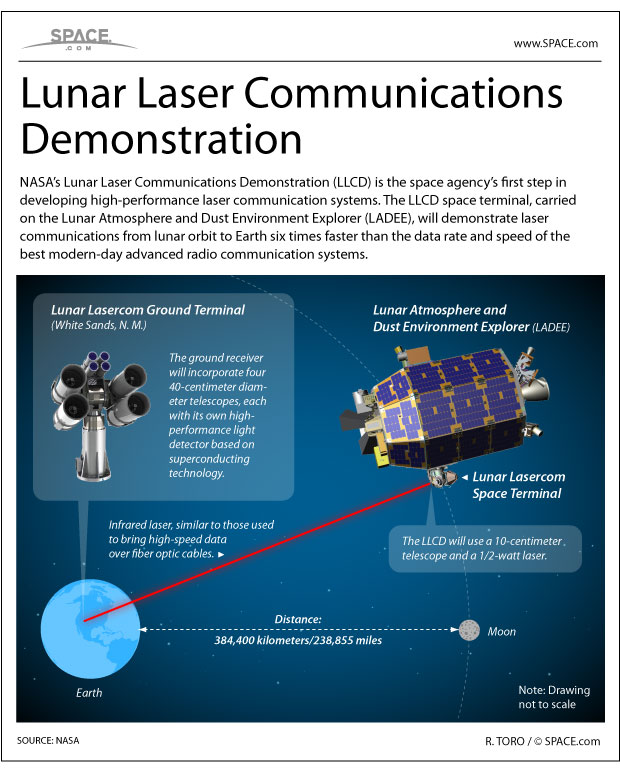Pew! Pew! Pew! How NASA's Space Laser Communications System Works (Infographic)

NASA's Lunar Laser Communications Demonstration (LLCD) is the agency's first attempt at developing a high-performance laser communications systemsfor interplanetary probes. The first LLCD space terminal is riding aboard NASA's Lunar Atmosphere and Dust Environment Explorer spacecraft (nicknamed LADEE for short), which is launching to the moon in September 2013.
Pew! Pew! Pew! NASA Moon Probe Carries Space Laser for Big Tech Test
The LLCD space terminal is designed to beam data from the moon at a rate six times faster than the best advanced radio communications systems available today. The system consists of a laser mount on the LADEE spacecraft which fires a 0.5-watt laser through a 10-centimeter telescope.
Moon Dust Mission: How NASA's LADEE Spacecraft Works (Infographic)
The data laser beam will then traverse the 238,855 miles (384,400 kilometers) between the moon and Earth to a ground station. The primary ground station, called the Lunar Lasercom Ground Terminal, is located in White Sands, N.M., near Las Cruces and features a set of four 40-centimeter telescopes to receive the signal. Other receiving stations include NASA's Deep Space Network antennas in Madrid, Spain, and Canberra, Australia.
- LADEE: NASA's Next Mission to the Moon
- Super-Fast Laser Communications Tech Hitches Ride On Moon Mission | Video
- Photos: NASA's LADEE Moon Dust Mission in Pictures
- How NASA's LADEE Moon Mission Works (Video)
Follow us @Spacedotcom, Facebook and Google+.
Breaking space news, the latest updates on rocket launches, skywatching events and more!
Ross is a former contributor to Space.com in the areas of technology, science, satellites and space exploration. He was also a former contributing infographic artist for Live Science, specializing in explanatory graphics that deal with science and technology topics. Ross is a former art director of the Los Angeles Times, Associated Press and United Press International. He teaches Filipino martial arts when not dabbling in cartoons and animation.
